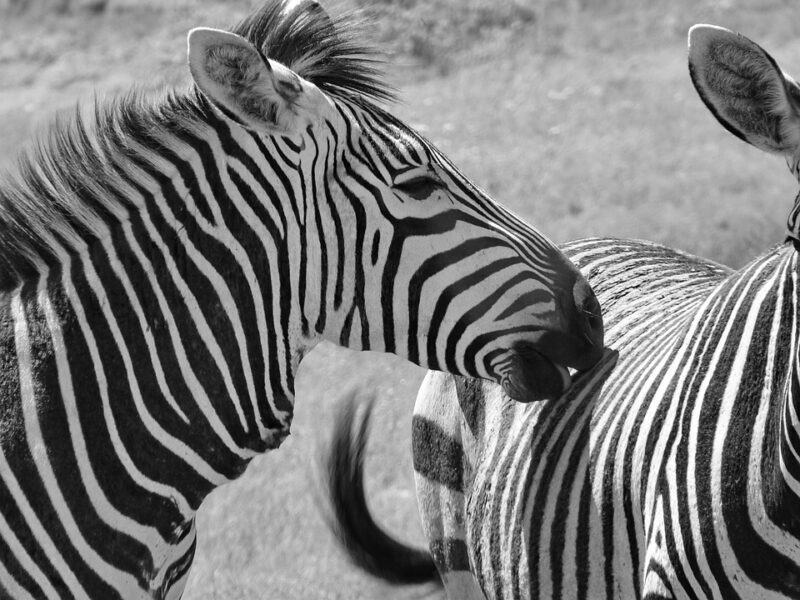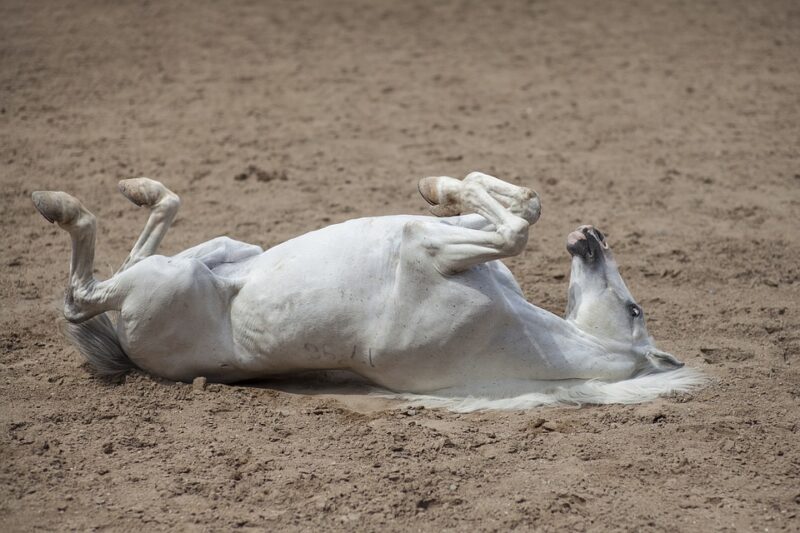Self-maintenance behaviors – the equine version of self-care – are the ways that horses take care of their bodies and keep themselves in good physical shape.
This page will give you info on how equine self-maintenance works – the ways that horses scratch, groom, roll, and otherwise keep their outsides healthy and itch-free. For enrichment ideas that promote these behaviors, head over to the Enrichment Ideas for Grooming and Scratching page!
Self-Grooming

Horses care for their coats by grooming with their teeth and hooves. This behavior is infrequent in adult horses – they may bite or lick their coats once or twice an hour – but is very important; horses groom themselves to scratch itches, remove parasites, and generally improve the condition of their skin and coat.
Mutual Grooming

There are places on the horse’s body that they can’t reach, such as the withers. Mutual grooming, where two horses groom one another, especially hard-to-reach areas, promotes good coat health but also improves social relations within the herd. It’s a form of bonding behavior and appears to be very enjoyable for horses. To promote mutual grooming, offer horses a natural social environment, allowing individuals to form stable bonds with one another. Offering your horse grooming opportunities of their choosing – where they are free to leave rather than grooming while tied – is a way to mimic mutual grooming and strengthen the bond between horse and human.
Rolling

When horses roll, they lie down on their bellies, flop onto their sides, and rock from side to side. Sometimes they turn all the way over, and other times they roll only on one side at a time.
Horses roll on many types of ground but appear to prefer rolling on sand or fine dry soil. They will also roll in mud, an interesting self-maintenance behavior that coats their hair with a layer of mud that may cool them and provide relief from flies and other pests. Rolling also appears to promote sharing of scent between members of a herd as horses leave their own particular smell on the areas they have rolled.
A good paddock or stall setup is the best way to allow a horse to roll. For horses that must be kept stalled, deep bedding can make it more comfortable for a horse to lie down. You can try multiple types of stall beddings to determine which your horse prefers and see if one promotes better grooming behaviors than another.
Scratching
Horses itch just like people do, and nothing feels quite as satisfying as perfectly scratching an itch. Scratching makes the skin and coat feel good, removes parasites, promotes blood flow to the skin, and spreads around the natural oils that make the horse’s coat healthy and water-resistant.
Horses will scratch on almost anything available to them, sometimes on objects (or people!) that shouldn’t be the target of an itchy 1,000-pound animal. Enrichment offers solutions to encourage healthful scratching in an appropriate way. In the pasture, you can build a scratching post or belly scratcher. In the stall or within shelter structures, scratch pads or scratching bars offer the horse to conquer all their itches. You can offer scratching structures of varying shapes and textures to give your horse the opportunity to adjust the experience to their needs. For a horse-human bonding experience, teach your horse a cue for “scratch time” and turn yourself into the horse’s own personal itch-buster for a few minutes.